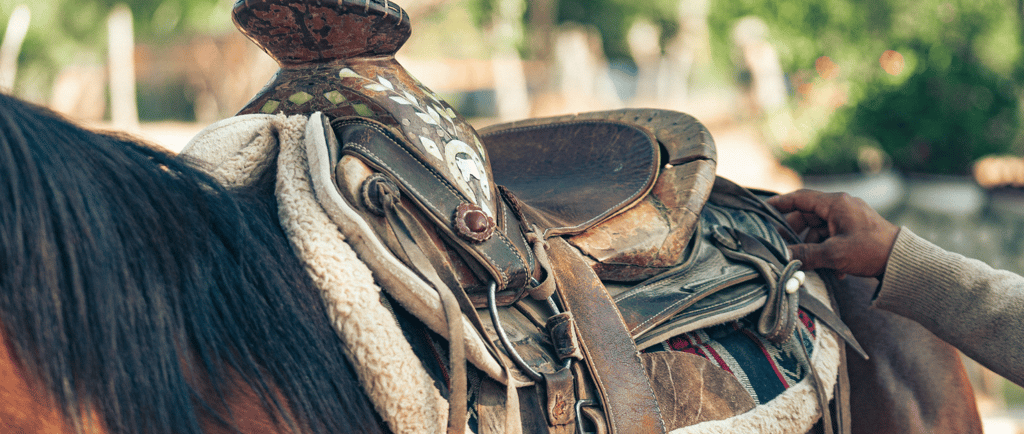Always free shipping in the usa !
Finding the Most Comfortable Saddle: A Rider’s Guide to Saddle Styles
Discover the most comfortable saddle styles for every rider in our comprehensive guide. Whether you're trail riding, competing, or looking for long-distance comfort, learn how different saddle types like Western, English, and endurance saddles can improve your riding experience. Explore key factors that affect comfort and find the perfect fit for both you and your horse.
Fernando
2/11/20256 min read


What Style Saddle Is the Most Comfortable?
Choosing the right saddle is one of the most important decisions a rider can make. A saddle is not just a piece of equipment; it’s a key factor in ensuring comfort, performance, and even safety while riding. Whether you’re riding for hours on a long trail ride or competing in a high-level event, your saddle needs to support both you and your horse in the best way possible. But with so many styles of saddles available, how do you know which one is the most comfortable for you?
In this article, we’ll explore different saddle styles, their comfort features, and what factors should influence your choice. From Western to English saddles and everything in between, we’ll help you determine which saddle style is best for your unique needs and preferences.
Why Is Saddle Comfort Important for Riders?
Saddle comfort plays a significant role in both the rider’s and horse’s well-being. An uncomfortable saddle can lead to a variety of problems, from back pain for the rider to soreness or even injury for the horse. For riders, discomfort can lead to poor posture, difficulty maintaining balance, and an overall unpleasant riding experience. For the horse, an ill-fitting saddle can cause chafing, pressure points, and can even lead to long-term issues like muscle atrophy.
Comfort isn’t just about personal preference; it also affects the rider’s ability to perform well. Whether you’re engaging in casual trail riding or intense competition, comfort allows you to focus on the ride, not on adjusting or feeling pain.
Factors That Affect Saddle Comfort
When considering saddle comfort, it’s important to look at several key factors that contribute to a good fit. These include the rider's anatomy, the horse’s build, the materials used in the saddle, and the type of riding you do.
Rider’s Anatomy
Each rider has a unique body type and shape, which plays a crucial role in determining the most comfortable saddle. For example, some riders may prefer a deeper seat for extra support, while others may opt for a flatter, more open seat. The length of your legs, the width of your hips, and your overall body shape can all influence the type of saddle that feels best.
Horse’s Build
Just like the rider, each horse is built differently. A saddle must fit the horse properly to avoid causing discomfort or injury. A saddle that is too wide or too narrow for the horse's back can create pressure points, leading to pain and discomfort. Ensuring the right fit for the horse is just as important as choosing the right style for the rider.
Materials Used in the Saddle
Saddles are typically made from either leather or synthetic materials, each offering different comfort levels. Leather saddles tend to be more durable and can break in to provide a more custom fit over time. Synthetic saddles, on the other hand, are often lighter and easier to maintain, though they may not mold to the rider's body as well as leather.
Type of Riding
The kind of riding you do will greatly affect the type of saddle you need. For instance, trail riders may prioritize comfort for long rides, while competitive riders may look for a saddle that allows them to have greater control and flexibility. Endurance riders and working cowboys will have very different saddle comfort needs from dressage competitors.
Different Saddle Styles and Their Comfort Features
Western Saddles
Western saddles are designed for long rides and working cattle, making them known for their comfort and support. They often feature a deep seat, high cantle, and a large, padded pommel to offer a secure riding position. The design of the Western saddle helps to distribute the rider’s weight evenly across the horse’s back, which is particularly helpful for long-distance rides or tasks like roping or ranch work.
Western saddles are built with comfort in mind for both the horse and rider. Their wide tree design helps to avoid pressure points on the horse’s back, and the thick padding ensures that riders stay comfortable for hours in the saddle. For riders who plan on spending long periods on horseback, a Western saddle is often the most comfortable option.
English Saddles
English saddles are lighter and more flexible compared to Western saddles, offering a closer contact with the horse. They are typically used in disciplines like dressage, jumping, and eventing. While they may not have the same level of cushioning as Western saddles, their design allows for greater flexibility and maneuverability, which is ideal for riders who need to communicate subtle cues to their horse.
English saddles generally feature a flatter seat and a narrower fit. This can be ideal for riders who prefer a closer feel to the horse, but it may not provide as much padding for comfort on long rides. English saddles are often chosen for their versatility and agility, especially in competitive riding.
Endurance Saddles
Endurance saddles are built for comfort during long rides, making them a top choice for long-distance riders. These saddles often include extra padding in the seat and under the saddle flaps, as well as lightweight materials to reduce fatigue. The goal of an endurance saddle is to allow the rider to maintain comfort over extended periods of time without putting too much pressure on the horse's back.
Endurance saddles are also designed to be more ergonomic, allowing for greater freedom of movement and flexibility. Many endurance saddles feature a more open seat design that distributes the rider’s weight evenly to reduce pressure points, making them ideal for those who frequently ride for several hours.
Treeless Saddles
Treeless saddles are becoming increasingly popular among riders seeking more flexibility and comfort. These saddles don’t have a rigid tree like traditional saddles, which means they can adapt more easily to the shape of both the rider and the horse. This flexibility allows for a closer feel to the horse, which can improve communication and comfort.
The absence of a rigid tree also means that treeless saddles tend to be lighter and easier to adjust. While they may not offer the same level of structure as traditional saddles, many riders find them more comfortable, especially for those with horses that have a more difficult-to-fit back.
Australian Stock Saddles
Australian stock saddles are known for their durability and support, particularly for riding in rugged terrain. They have a deep seat and are designed to help riders maintain a stable position, even in rough conditions. The high pommel and cantle offer additional security, making them a popular choice for trail and working riders.
The Australian stock saddle is a good choice for those who need a comfortable, secure seat for long hours in the saddle. The added knee pads and secure stirrups provide extra comfort, especially for riders who need to navigate uneven or challenging terrain.
How to Choose the Right Saddle for Maximum Comfort
Choosing the right saddle involves understanding both your riding discipline and the fit for both you and your horse. Here’s what you should consider:
Riding Discipline: Choose a saddle that suits your primary riding style. For long trail rides, Western or endurance saddles may be ideal. For competitive events, an English saddle or specific discipline saddle (like dressage or jumping) might be a better fit.
Proper Saddle Fitting: Ensure the saddle fits both you and your horse properly. A professional saddle fitter can help you achieve the best fit, which is crucial for comfort.
Material and Padding: Consider the material that works best for you. Leather offers durability, while synthetic materials are lighter. Additionally, adequate padding ensures that you stay comfortable on long rides.
Additional Tips for Saddle Comfort
Use Seat Cushions: Adding a gel pad or saddle cushion can provide extra support and comfort, especially on longer rides.
Saddle Care: Regularly clean and condition your saddle to keep it in good shape. A well-maintained saddle provides better comfort and longevity.
Check Fit Frequently: The fit of your saddle can change over time, so have it checked periodically to ensure it continues to provide the best support for both you and your horse.
Conclusion
Choosing the right saddle is a personal decision that depends on your riding style, comfort needs, and the type of horse you ride. Whether you’re a Western rider looking for comfort on long trail rides or an English rider seeking flexibility for competitive events, there’s a saddle out there designed for your needs. Take the time to find the right style and fit, and you’ll enjoy a more comfortable and enjoyable ride every time.
Now that you know more about the various saddle styles, we’d love to hear your experiences. What saddle do you find most comfortable, and why? Share your thoughts in the comments below!
Quality
Premium Quality Western Belt Buckles For Him or Her.
support@lohkko.com
Lohkko© 2018. All rights reserved.
